Information injection-pump assembly
ZEXEL
106693-1880
1066931880
ISUZU
1156025090
1156025090
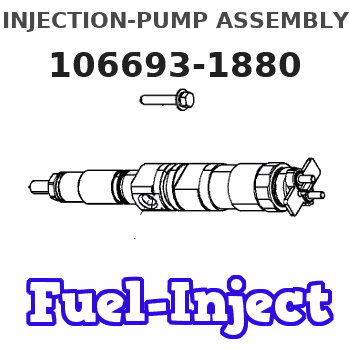
Rating:
Service parts 106693-1880 INJECTION-PUMP ASSEMBLY:
1.
_
7.
COUPLING PLATE
8.
_
9.
_
11.
Nozzle and Holder
1-15300-128-2
12.
Open Pre:MPa(Kqf/cm2)
17.7(180)
15.
NOZZLE SET
Include in #1:
106693-1880
as INJECTION-PUMP ASSEMBLY
Cross reference number
ZEXEL
106693-1880
1066931880
ISUZU
1156025090
1156025090
Zexel num
Bosch num
Firm num
Name
Calibration Data:
Adjustment conditions
Test oil
1404 Test oil ISO4113 or {SAEJ967d}
1404 Test oil ISO4113 or {SAEJ967d}
Test oil temperature
degC
40
40
45
Nozzle and nozzle holder
105780-8140
Bosch type code
EF8511/9A
Nozzle
105780-0000
Bosch type code
DN12SD12T
Nozzle holder
105780-2080
Bosch type code
EF8511/9
Opening pressure
MPa
17.2
Opening pressure
kgf/cm2
175
Injection pipe
Outer diameter - inner diameter - length (mm) mm 8-3-600
Outer diameter - inner diameter - length (mm) mm 8-3-600
Overflow valve
134424-1920
Overflow valve opening pressure
kPa
127
107
147
Overflow valve opening pressure
kgf/cm2
1.3
1.1
1.5
Tester oil delivery pressure
kPa
157
157
157
Tester oil delivery pressure
kgf/cm2
1.6
1.6
1.6
Direction of rotation (viewed from drive side)
Right R
Right R
Injection timing adjustment
Direction of rotation (viewed from drive side)
Right R
Right R
Injection order
1-4-2-6-
3-5
Pre-stroke
mm
3
2.97
3.03
Beginning of injection position
Drive side NO.1
Drive side NO.1
Difference between angles 1
Cal 1-4 deg. 60 59.75 60.25
Cal 1-4 deg. 60 59.75 60.25
Difference between angles 2
Cyl.1-2 deg. 120 119.75 120.25
Cyl.1-2 deg. 120 119.75 120.25
Difference between angles 3
Cal 1-6 deg. 180 179.75 180.25
Cal 1-6 deg. 180 179.75 180.25
Difference between angles 4
Cal 1-3 deg. 240 239.75 240.25
Cal 1-3 deg. 240 239.75 240.25
Difference between angles 5
Cal 1-5 deg. 300 299.75 300.25
Cal 1-5 deg. 300 299.75 300.25
Injection quantity adjustment
Adjusting point
A
Rack position
6.8
Pump speed
r/min
1150
1150
1150
Average injection quantity
mm3/st.
118
116
120
Max. variation between cylinders
%
0
-4
4
Fixing the lever
*
Injection quantity adjustment_02
Adjusting point
B
Rack position
6.4
Pump speed
r/min
700
700
700
Average injection quantity
mm3/st.
97.7
95.7
99.7
Max. variation between cylinders
%
0
-3
3
Basic
*
Fixing the lever
*
Injection quantity adjustment_03
Adjusting point
-
Rack position
4.2+-0.5
Pump speed
r/min
225
225
225
Average injection quantity
mm3/st.
13
9.8
16.2
Max. variation between cylinders
%
0
-13
13
Fixing the rack
*
Remarks
Adjust only variation between cylinders; adjust governor according to governor specifications.
Adjust only variation between cylinders; adjust governor according to governor specifications.
Injection quantity adjustment_04
Adjusting point
E
Rack position
7.7+-0.5
Pump speed
r/min
300
300
300
Average injection quantity
mm3/st.
109.6
106.6
112.6
Fixing the lever
*
Remarks
Startup boost setting
Startup boost setting
Injection quantity adjustment_05
Adjusting point
F
Rack position
7.2+-0.5
Pump speed
r/min
350
350
350
Average injection quantity
mm3/st.
101.4
98.4
104.4
Fixing the lever
*
Timer adjustment
Pump speed
r/min
900+50
Advance angle
deg.
0
0
0
Remarks
Start
Start
Timer adjustment_02
Pump speed
r/min
1150
Advance angle
deg.
5.5
5
6
Remarks
Finish
Finish
Test data Ex:
Governor adjustment
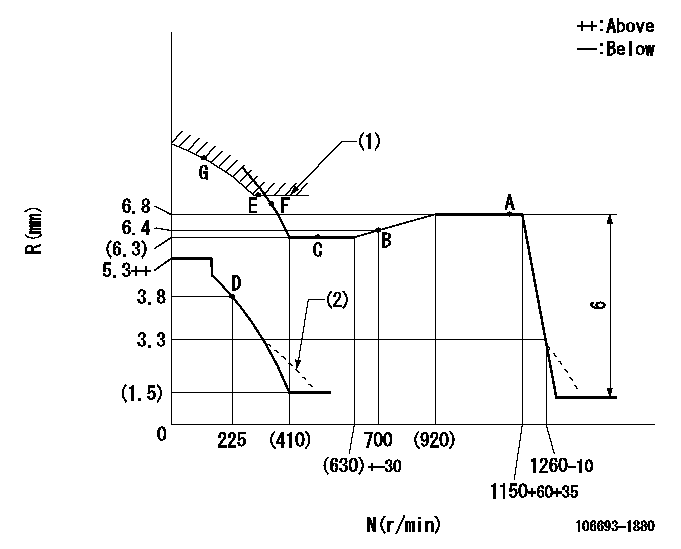
N:Pump speed
R:Rack position (mm)
(1)Excess fuel setting for starting: SXL
(2)Damper spring setting: DL
----------
SXL=(7.7)+-0.1mm DL=3.3-0.5mm
----------
----------
SXL=(7.7)+-0.1mm DL=3.3-0.5mm
----------
Speed control lever angle
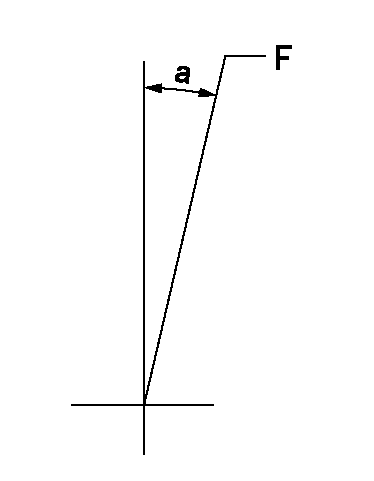
F:Full speed
----------
----------
a=5deg+-5deg
----------
----------
a=5deg+-5deg
0000000901
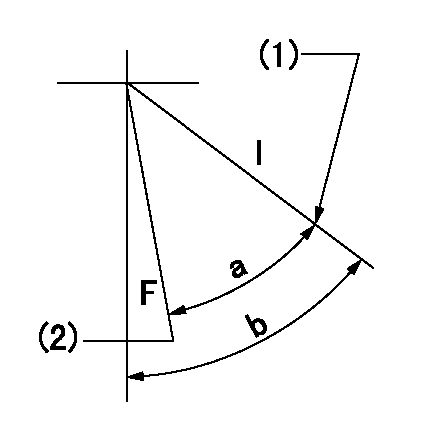
F:Full load
I:Idle
(1)Stopper bolt setting
(2)Attach the return spring to the bottom hole and adjust.
----------
----------
a=(26deg)+-3deg b=55deg+-5deg
----------
----------
a=(26deg)+-3deg b=55deg+-5deg
Stop lever angle
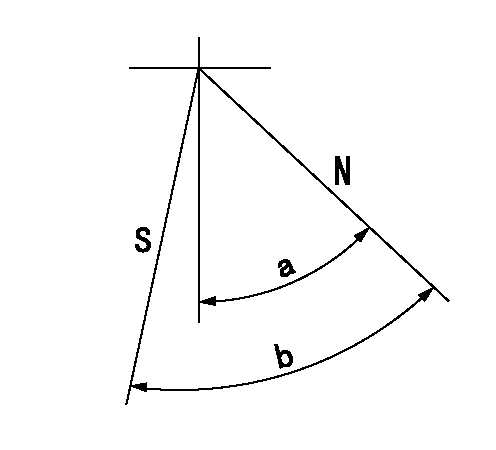
N:Pump normal
S:Stop the pump.
----------
----------
a=52deg+-5deg b=64deg+-5deg
----------
----------
a=52deg+-5deg b=64deg+-5deg
0000001501 RACK SENSOR

V1:Supply voltage
V2f:Full side output voltage
V2i:Idle side output voltage
(A) Black
(B) Yellow
(C) Red
(D) Trimmer
(E): Shaft
(F) Nut
(G) Load lever
1. Load sensor adjustment
(1)Connect as shown in the above diagram and apply supply voltage V1.
(2)Hold the load lever (G) against the full side.
(3)Turn the shaft so that the voltage between (A) and (B) is V2.
(4)Hold the load lever (G) against the idle side.
(5)Adjust (D) so that the voltage between (A) and (B) is V2i.
(6)Repeat the above adjustments.
(7)Tighten the nut (F) at the point satisfying the standards.
(8)Hold the load lever against the full side stopper and the idle side stopper.
(9)At this time, confirm that the full side output voltage is V2f and the idle side output voltage is V2i.
----------
V1=5+-0.02V V2f=0.15+-0.03V V2i=2.35-0.03V
----------
----------
V1=5+-0.02V V2f=0.15+-0.03V V2i=2.35-0.03V
----------
0000001601 GOVERNOR TORQUE CONTROL

Dr:Torque control stroke
(A): Without torque control spring capsule
1. Adjustment procedures
(1)Procedure is the same as that for the RFD (former type), except that the positive torque control stroke must be determined at the full lever setting.
2. Procedures for adjustment
(1)Remove the torque control spring capsule.
(2)Operate the pump at approximately N1. (End of idling spring operation < N1.)
(3)Tilt the lever to the full side.
(4)Set so that R = RF.
(5)Increase the speed by pushing in the screw (attached to the bracket on the rear of the tension lever) through the adjusting window.
(6)Adjust so that the torque control stroke Dr1 can be obtained.
(7)Align N2 and N3 with the torque control spring capsule.
3. Final confirmation
(1)After final confirmation, temporarily set the load lever to N = N1, R = idling position.
(2)From this condition, increase speed to N = N4.
(3)Confirm that positive torque control stroke is Dr2.
----------
N1=500r/min N2=(630)+-30r/min N3=(920)r/min N4=1100r/min RF=(6.3)mm Dr1=0.5mm Dr2=0+0.3mm
----------
----------
N1=500r/min N2=(630)+-30r/min N3=(920)r/min N4=1100r/min RF=(6.3)mm Dr1=0.5mm Dr2=0+0.3mm
----------
Timing setting
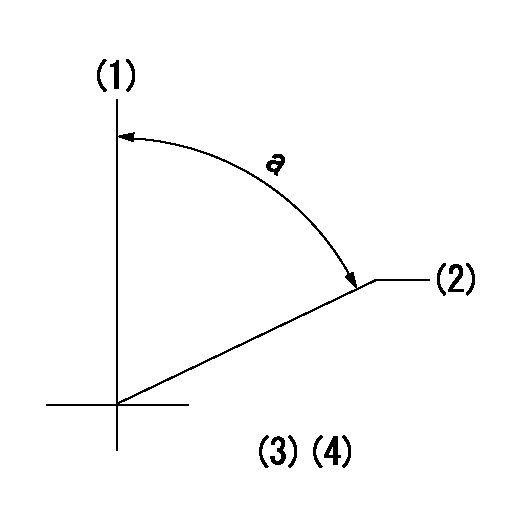
(1)Pump vertical direction
(2)Position of timer's threaded hole at No 1 cylinder's beginning of injection
(3)B.T.D.C.: aa
(4)-
----------
aa=14deg
----------
a=(60deg)
----------
aa=14deg
----------
a=(60deg)
Information:
GENERAL
1. Schematic
Schematic2. Specifications (standard) INSPECTION
Inspection points1. Water pump Check the impeller and shaft for rotation. If they do not rotate freely or have noise, replace the water pump assembly.
Checking water pump2. Thermostat (standard) Hang the thermostat in the pan of water as shown in the illustration. The thermostat must be below the surface of the water and its must be away from the sides of the pan. Heat the water uniformly in the pan and measure a temperature at which the valve starts opening and a temperature at which the valve lift (distance) is 8 mm (0.3 in.). Replace the thermostat if defective.
Water in the pan is hot. Any contact can cause severe burns.
Testing thermostat3. Thermoswitch (standard) Hang the thermoswitch in the pan of oil with its temperature sensing end below the surface of oil and measure the resistance while heating the oil as shown in the illustration. If the resistance is incorrect, replace the thermoswitch.
Oil in the pan is hot. Any contact can cause severe burns.
Testing thermoswitch4. Thermounit (standard) Hang the thermounit in the pan of antifreeze with its temperature sensing end below the surface of antifreeze and measure the resistance while heating the antifreeze as shown in the illustration. If the resistance is incorrect, replace the thermounit.
Antifreeze in the pan is hot. Any contact can cause severe burns.
Testing thermounit
1. Schematic
Schematic2. Specifications (standard) INSPECTION
Inspection points1. Water pump Check the impeller and shaft for rotation. If they do not rotate freely or have noise, replace the water pump assembly.
Checking water pump2. Thermostat (standard) Hang the thermostat in the pan of water as shown in the illustration. The thermostat must be below the surface of the water and its must be away from the sides of the pan. Heat the water uniformly in the pan and measure a temperature at which the valve starts opening and a temperature at which the valve lift (distance) is 8 mm (0.3 in.). Replace the thermostat if defective.
Water in the pan is hot. Any contact can cause severe burns.
Testing thermostat3. Thermoswitch (standard) Hang the thermoswitch in the pan of oil with its temperature sensing end below the surface of oil and measure the resistance while heating the oil as shown in the illustration. If the resistance is incorrect, replace the thermoswitch.
Oil in the pan is hot. Any contact can cause severe burns.
Testing thermoswitch4. Thermounit (standard) Hang the thermounit in the pan of antifreeze with its temperature sensing end below the surface of antifreeze and measure the resistance while heating the antifreeze as shown in the illustration. If the resistance is incorrect, replace the thermounit.
Antifreeze in the pan is hot. Any contact can cause severe burns.
Testing thermounit